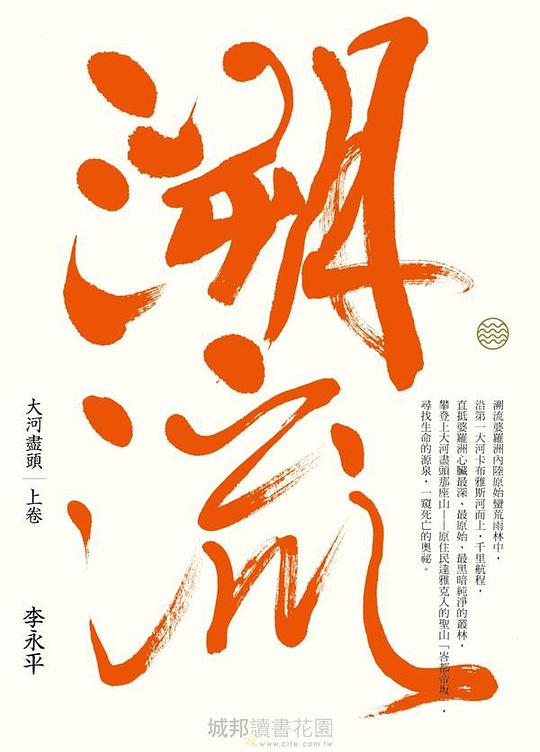1
/
of
2
The River's End (Part 1): Upstream (Collector's Edition)
The River's End (Part 1): Upstream (Collector's Edition)
Li Yongping
Regular price
$26.99 USD
Regular price
Sale price
$26.99 USD
Unit price
/
per
Low stock
Couldn't load pickup availability
About Book
About Book
National Award for Literature and Arts winner Li Yongping's classic masterpiece, the "Moon River Trilogy"—"Rain and Snow," "The End of the Great River (Part 1): Upstream," "The End of the Great River (Part 2): Mountain," and "The Red Bird's Calligraphy"—tells the most moving and colorful fantasy adventure story in the Borneo rainforest. Master calligrapher Dong Yangzi personally inscribes the title, and rising designer Liao Wei, winner of dozens of major awards both domestically and internationally, designs the interiors. The publication of the two volumes of "The End of the Great River," "Upstream" and "Mountain," marks a major event in the first decade of Chinese literature in the new century. It's been a long time since we've seen a novel as beautiful and enduring as "The End of the Great River." It's engaging because Li Yongping embraces traditional storytelling techniques, leaving readers eager to see how the story unfolds next. His depiction of the river's adventure is so vivid and graphic, imbued with the spirit of classical realism. It's enduring because Li Yongping isn't content with merely telling a traditional tale of youthful enlightenment. His meticulous craftsmanship of imagery and his exploration of memory and desire overturn realism's reflectionist thesis, transforming the writing itself into a magnificent adventure. —David Wang (Lecturer at Harvard University, USA) This book won the Expert Recommendation Award at the 3rd "Dream of the Red Chamber Awards: World Chinese Novel Awards" in 2010. So, that evening, the two of us embarked on a fantastical and enchanting journey to Taipei. That night, on the neon-lit streets of Taipei, after recounting twelve childhood stories from Borneo, I sat beneath a table lamp in the Hualien-Taitung Longitudinal Valley, looking out the window at the moon goddess, smiling from her perch atop Mount Qilai, the same goddess who, three years earlier, had looked down upon us, one young and one large, as we trekked through the Black Water River at the foot of Guanyin Mountain. Finally, I summoned the courage and brazenly called out to you: Soul, come back, red crane. Open a world map and look at the equator, at the intersection of longitude 115 degrees east and latitude 0 degrees, south of the South China Sea and north of the Java Sea. Across a vast expanse of tropical waters lies an island. Shaped like a cone, it is the world's third-largest continental island. The only remaining rainforest in the South China Sea has been a malaria-ridden area since ancient times, where the remains of countless European missionaries, Arab merchants, Dutch officials and their families, Japanese imperial soldiers and camp prostitutes, American hippies, and overseas Chinese miners are buried. The island is covered with dense, hot rainforests, shrouded in mist, steaming year-round under the fiery red sun of the equator. Six major river systems—the Rajang, Balam, Kayan, Mahagan, Barito, and Kabuas—originate from the central Galapi Highlands, like a giant octopus, radiating outwards and flowing along the island. Rushing down the mountain into the inland jungle, the river suddenly transforms into thousands of yellow snakes, weaving in and out of the rainforest, weaving through the intertwined swamps. It reaches the coastal alluvial plains, where it converges into six great rivers, transforming into six giant yellow pythons, surging and roaring as they diverge into the Java Sea, the Celebes Sea, the Sulu Sea, and the South China Sea. Chief among these six river systems is the Kabuas, known as Indonesia's longest river. At 1,143 kilometers long, it flows through the vast province of West Kalimantan. The Chinese call it the Kajang, while the Dayak simply call it the "Great River." At the river's end, at the horizon, beneath the mighty equatorial sun, amidst the lush rainforest, rises eerily and bare, a massive rock left from the creation of the world—Batu Dizan. The novel begins here, during the summer vacation of my fifteenth year, when the narrator, "I," coincidentally joins a group of Europeans and Americans on a rafting trip up the Kabuas River, Borneo's largest river. After a thousand-mile voyage, they reach Batu Dizan, a sacred mountain for the Dayak people, the indigenous people of Borneo. There, they glimpse the source of life and the mystery of death... Mysteries, strange folklore, and legends unfold one after another in the vast tropical rainforest...
Publication Date
Publication Date
2017-09-16
Publisher
Publisher
麥田
Imprint
Imprint
Pages
Pages
432
ISBN
ISBN
9789863444923
share



